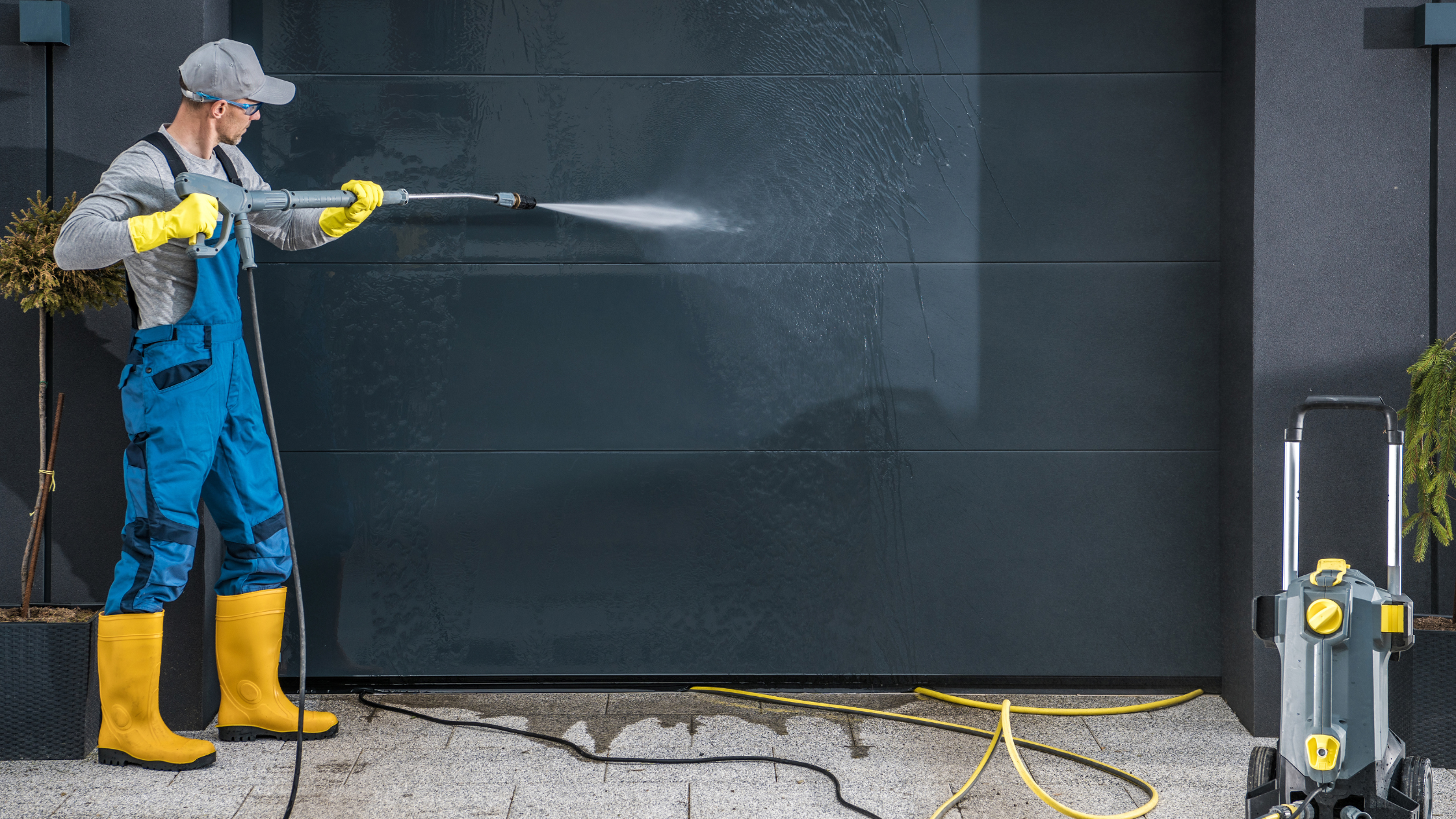Often, homeowners don’t notice problems with their roofs until things are so severe that leaks come through the ceiling. When it gets to this point, this has become a major issue. If homeowners stay up on roof maintenance and regular cleaning, they can become proactive and on top of roof issues before they become full-blown roof failures.
How Do I Know if My Roof Needs Repair or Replacement? 4 Common Roofing Red Flags.
1. Debris on Your Roof
Debris sitting on your roof for long periods is a large cause of roof failure. Homeowners should regularly (seasonally) clean off pine needles, branches, leaves, and any other debris sitting on their roofs.
2. Storm, Wind, or Hail Damage
Storm damage is the second most common cause of roof failure. After any major storm or weather event, assessing what damage may have been done is important. What could damage look like? Strong winds often result in missing or damaged shingles, branches, or larger debris that may have penetrated the roof. Hail damage can remove the protective surface on your shingles. Shingles are traditionally asphalt covered in a protective grit, which can be broken down over time by UV rays, hail, constant heavy rain, and debris friction.
3. The build-up of Moss or Fungus
Moss thrives in temperate climates like the Pacific Northwest, making this a common issue for Seattle-area homeowners. When moss builds up on the surface of your roof, it traps moisture, creating little dams that back up water. This can then cause water to get underneath shingles, penetrating the roof and causing failure. These moist environments are also prime for fungal growth.
4. Curled or Buckles Shingles
When you have shingles curling up at the edges or beginning to buckle (not laying flat), they are prone to wind and water damage. These raised edges or gaps beneath the shingles are invitations for water to get underneath them or wind to catch the edge and pull them right off.
Your Roof is More Than Just Shingles - It's a System.

Better Builders, Des Moines Whole House Remodel
Your roof is a whole system that includes shingles, sheeting, gutters, flashing, and more. Sometimes leaks can be caused by things other than a shingle or roof failure. Here are additional areas where roof failures can originate. Any place where roofing meets another structure - for example, chimneys, plumbing vents, furnace vents, or a second story where a roof may butt up to another roofing structure with flashing, are vulnerable areas for failure.
- Cracked Caulking on a Chimney or Around Vents and Pipes:
This is looking at any joint where moisture may penetrate the structure. Caulking only lasts a few years, whereas your roof should last 20+ years. This means caulking needs to be maintained regularly to prevent leaks. - Flashing Issues:
Flashing around skylights can be a major area for leaks. Seasonally, you should ensure flashing isn’t pulled away or doesn’t include gaps. This space should also be specifically checked for mold. Rust on your flashing may also be an indicator of sitting moisture. - Peeling Paint on Roof Overhangs:
Peeling paint can indicate that you may have a leak. This is because the wood behind the paint gets wet, and then as the water heats up and becomes vaporized, it pushes the paint off the wood from behind. So when there’s peeling paint, it’s usually because there’s moisture behind or in the wood. - Gutters are Part of a Roof Assembly on a Sloped Roof:
While not directly part of the roof, keeping gutters clean is essential for maintaining a healthy roof. Clogged gutters enable water to sit and pool onto the roof and can cause moisture to penetrate the structure.
Interior things to look for that may indicate a roof leak include ceiling paint peeling, water spots, and mold/mildew. It’s important to remember that leaks can travel sideways in a building, so the visible leak damage may not be directly below where it originates.
Structural damage is also a significant concern to be aware of when it comes to compromised roof systems. The longer you leave a leaky roof, the more cost and time you’ll need to repair it. If a roof failure has been left too long, it can cause structural damage to the sheeting beneath the shingles and roof rafters or trusses. If this is the case, a contractor will need to be brought in to fix the structural issues in addition to the roof being replaced. You should inspect trusses and beams annually for cracks, rust, and rot.
What’s the Lifespan of a Roof?

Better Builders, North Admiral Classic - New Construction
In the Pacific Northwest, some common roofing materials include asphalt or composition shingles, metal, vinyl, wood shake, and PVC membrane. The type of material used on any given home will be somewhat based on the slope of your roof. It’s important to keep in mind that each material type will have its own unique recommendations for maintenance and vary in life expectancy and cost for materials and installation labor. Commonly, there are 20-50 year roof warranties and the life expectancy of your roofing material should match your warranty period. To make the right roofing system choice, it’s recommended you consult with a dedicated roofing professional like Tekline Roofing.
How Do I Know if My Roof Needs to be Repaired or Replaced?
The easiest and most efficient way to determine if your roof needs to be repaired or replaced is to consult a professional. They will inspect the age of the roof, the current condition of the roof, if there are any damaged or missing shingles, and the overall material. The severity of the damage will determine if it’s more cost-effective to repair just that one section or replace the whole roof. If you have an older roof that has been worn by the sun, the replacement of a few shingles will be easily noticeable and will aesthetically look bad. Properly matching the color and wear of older roofing material is more difficult to repair because of this.
Keep a Solid Roof Over Your Head
When it comes to your home’s roof, you should always be proactive in maintenance and inspection. While roof challenges may appear simple, the fix can often be more involved than you think. An experienced contractor or roofing professional will approach the problem holistically, assessing the whole roof system, not just the visible issues.
Roof repair and regular inspection should be part of any good home maintenance list. For more tips on taking care of your home, download our eBook, “Redefining Home Maintenance: The Proactive & Essential Guide for Homeowners”.


















